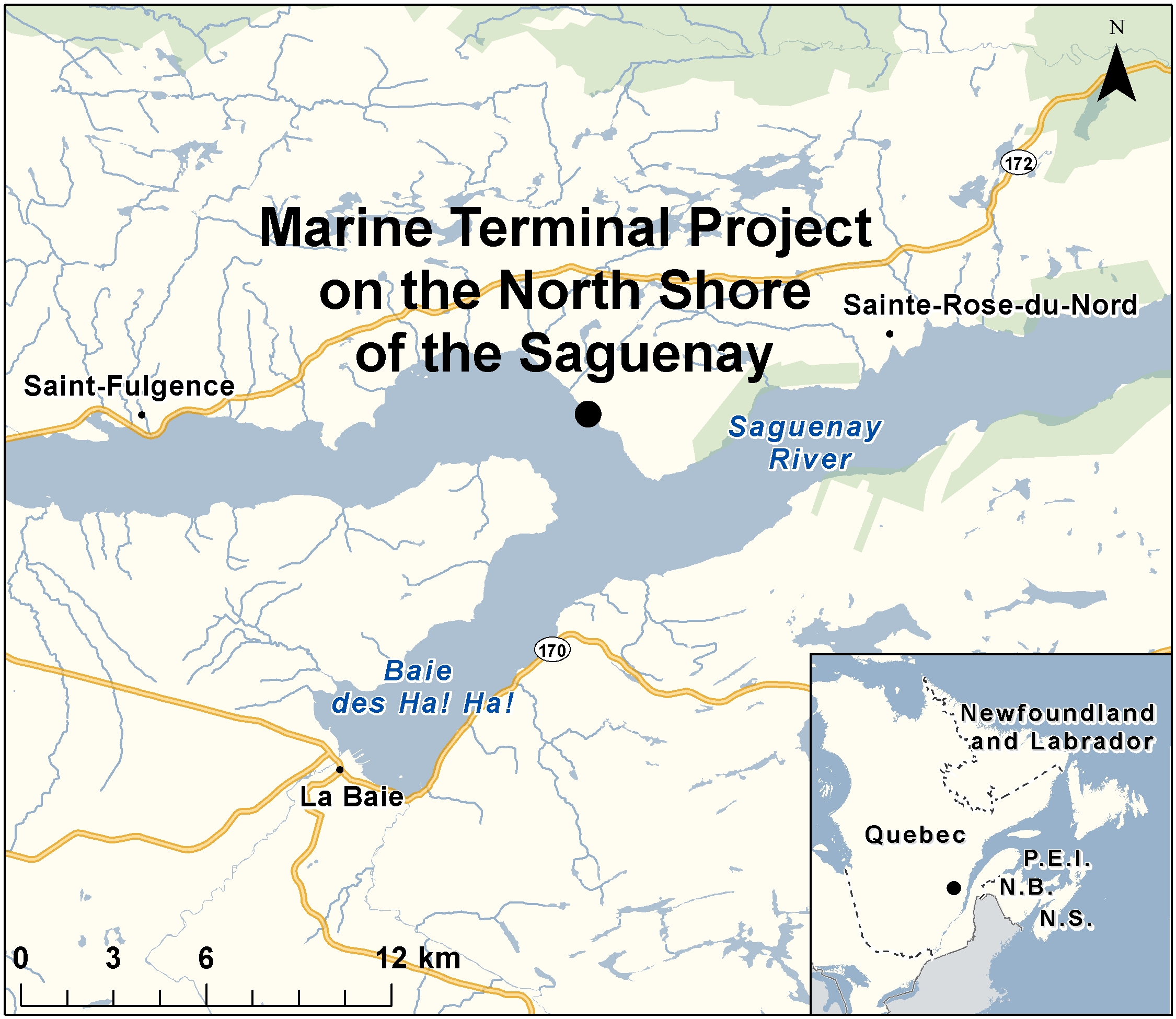Marine Terminal Project on the North Shore of the Saguenay
Public Notice
Marine Terminal Project on the North Shore of the Saguenay — Federal Funding Available
August 13, 2015 — The Canadian Environmental Assessment Agency (the Agency) is making available funding to support participation of the public and Aboriginal groups in the federal environmental assessment of the Marine Terminal Project on the North Shore of the Saguenay, located in Quebec.
Funding is available for eligible individuals and groups to enable their participation in upcoming steps of the environmental assessment, which include reviewing and providing comments on the Environmental Impact Statement or on the summary thereof, the draft Environmental Assessment Report, and on potential environmental assessment conditions.
Applications received by September 14, 2015 will be considered. Recipients and the amount of funding allocated will be announced at a later date.
To apply for funding, or for more information on the project and the environmental assessment process, visit the Agency's website (Registry reference number 80103) or contact the Participant Funding Program by writing to PFP.PAFP@ceaa-acee.gc.ca or by calling 1-866-582-1884.
This project is assessed under the Canadian Environmental Assessment Act, 2012 using a science-based approach. If the project is permitted to proceed to the next phase, it will continue to be subject to Canada's environmental laws, enforcement and follow-up, and fines for non-compliance.

The Proposed Project
The Saguenay Port Authority is proposing the construction and operation of a new multi-user marine terminal to service the north shore of the Saguenay River at the municipality of Sainte-Rose-du-Nord, located approximately 45 kilometres from the city of Saguenay. The project involves the building of a wharf, a ship loader, silos, concentrate handling facilities and related buildings. An access road to the wharf of 1 to 1.5 kilometre in length will have to be built. The berthing capacity of the wharf would be designed to accommodate bulk cargo vessels with a minimum of 50,000 deadweight tonnage.
Document reference number: 10